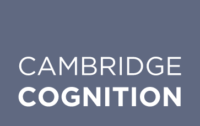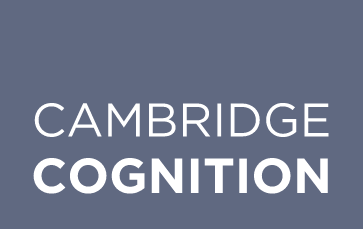Closing the Gap
Speech Analysis as an Objective Biomarker in MDD Trials
The development of new therapies for Central Nervous System (CNS) disorders, particularly Major Depressive Disorder (MDD), is fundamentally challenged by the subjectivity and limitations of current assessment tools.
Traditional measures, which often rely on patient self-reports or clinician ratings, frequently fail to capture the subtle but impactful cognitive and affective changes that characterize the illness. This incomplete picture hinders effective intervention and accurate treatment measurement.
To address this critical gap, Micaela Wiseman, PhD Candidate, and Dr. Jennifer Rabin, along with a team from the University of Toronto/Sunnybrook Research Institute, evaluated how objective voice-based assessments can provide a more robust, scalable, and low-burden method for assessing depression in clinical research. By utilizing Cambridge Cognition’s Winterlight app on participants’ own devices, this study aimed to remotely and objectively quantify aspects of depression that traditional, subjective assessments are currently missing.
We dive into the methodology and core findings of their research, “Speech Analysis as an Objective Measure for Cognitive and Affective Symptoms in Treatment Resistant Depression”, which was presented at the Society of Biological Psychiatry earlier this year. This work reveals how objective speech analysis may complement clinical assessments and enhance data quality in mental health research.
The Strategic Challenge: Moving Beyond Subjectivity
The field of psychiatry lacks objective biomarkers, relying heavily on subjective self-report and clinician assessments like the Hamilton Depression Rating Scale. These conventional methods are inherently limited by subjectivity, potentially failing to capture the full picture of depression symptoms and functional impairment, especially cognitive difficulties.
The primary objective of this study was to evaluate if automated speech assessment could serve as an objective, more scalable, and low-burden tool to bridge this gap, and to assess aspects of depression that traditional subjective measures might miss, particularly when using a remote protocol.
The Methodology
The study employed a rigorous approach to measure both subjective and objective data in 66 patients with treatment-resistant Major Depressive Disorder (MDD) and 54 non-depressed control participants:
- Remote Speech Recordings
Collected on participants’ own devices using the Winterlight app. Participants completed a brief journaling task (“please tell me how you are feeling today”). - Objective Cognition Assessment
An in-clinic eye-tracking anti-saccade task was used to measure executive function. - Standard Clinical Assessment
Clinician-administered assessments of symptoms, specifically the Hamilton Depression Rating Scale (HAMD-17).
Distinguishing MDD and Highlighting Cognition
The study established that patients with MDD have differences in speech patterns compared to non-depressed controls. This suggests that objective voice analysis can detect signs of depression.
Key features that significantly differed in the MDD group included:
- Linguistic Changes
Patients used more negative words, words with higher emotional intensity, and words denoting a lower sense of agency. - Acoustic/Speech Changes
Patients, on average, spoke with a lower mean pitch, slower speech rate, and longer pauses compared to controls.
While most speech features did not correlate with depression severity scores on the HAMD-17, a number of them correlated with an objective measure of executive function (anti-saccade reaction time). This included speech rate, pause duration, use of negative words, and sense of agency words.
This demonstrates that speech assessments may be able to uniquely detect difficulties in executive function that standard, subjective clinical assessments may be missing.
Navigating the Challenges of Novel Biomarkers
During the study, there were two primary challenges inherent in novel biomarker adoption:
- Limited Correlation with Traditional Scores
Initial analysis showed that most speech features, despite showing strong group differences, did not correlate with HAMD-17 scores. This required the team to investigate if the speech features related to other aspects of depression not covered by the HAM-D, leading to the critical finding linking them to executive function. - Feature Selection
Due to the high volume of measures available from a single speech assessment, it was a challenge on selecting which speech features to focus on. This was addressed by utilizing a select set of speech measures based on existing hypotheses and previous literature.
Implications and Future Research
These results provide objective evidence that executive function deficits can be captured through the speech of individuals with depression. By detecting these changes through brief, low-burden, scalable assessments, speech markers offer a valuable tool for assessing both depression and cognitive dysfunction in a flexible, high-frequency manner. This helps to shine a light on aspects of cognition and behaviour that are affected but often missed by routine clinical assessments.
The next crucial steps involve a longitudinal follow-up to build on these findings with repeated testing. This research will test whether voice assessments can track changes in depressive symptoms following treatment.
The Role of Objective Cognitive Assessment Tools in Clinical Research for CNS Disorders
The findings underscore the importance of objective cognitive assessment tools in mental health assessment and research. Cognitive models suggest that cognitive processes may mediate mood symptoms in depression, yet cognitive assessments are not routinely conducted in the clinic. The integration of highly scalable, objective digital tools allows researchers to capture these vital cognitive components that are often missed, which may be transformational for MDD research and improving care.
Solutions such as Cambridge Cognition’s Winterlight technology enable remote, app-based assessment capabilities, which can offer significant advantages for clinical trials:
- Scalability and Flexibility
The app allows patients to download and complete assessments on their own time, making testing lower burden and more scalable than in-clinic assessments. - Data Monitoring
The system enables research teams to monitor assessments and patient progress on the back end, which is crucial for study management. - Sensitivity to Symptoms
These highly sensitive cognitive assessment tools have specificity to certain cognitive domains, providing novel insights into symptoms.
Speak with our specialists to learn how integrating scalable digital and voice cognitive assessments can provide high-quality, objective biomarker data for your CNS clinical research.
References
- Van Den Berg, R. L. et al. Digital remote assessment of speech acoustics in cognitively unimpaired adults: feasibility, reliability and associations with amyloid pathology. Alz Res Therapy 16, 176 (2024).
- Robin, J. et al. Automated detection of progressive speech changes in early Alzheimer’s disease. Alz & Dem Diag Ass & Dis Mo 15, e12445 (2023).
- Robin, J., Xu, M., Kaufman, L. D. & Simpson, W. Using Digital Speech Assessments to Detect Early Signs of Cognitive Impairment. Front. Digit. Health 3, 749758 (2021).
Poster Download Request
Thank you for your interest in our research. Please complete the form below to access our research content.
Author

Rob Baker
Chief of Product & Operations

Job title

Job title

